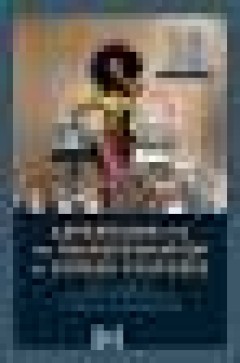Filter by

Aerospace Engineering
Abstract This book is a collection of reviewed and relevant research chapters, offering a comprehensive overview of recent developments in the field of engineering. The book comprises chapters authored by various researchers and edited by an expert active in the aerospace engineering research area. All chapters are separate but united under a common research study topic. This publication aims …
- Edition
- -
- ISBN/ISSN
- 9781839627873
- Collation
- -
- Series Title
- -
- Call Number
- -

Aeronautics and Astronautics
Abstract In its first centennial, aerospace has matured from a pioneering activity to an indispensable enabler of our daily life activities. In the next twenty to thirty years, aerospace will face a tremendous challenge - the development of flying objects that do not depend on fossil fuels. The twenty-three chapters in this book capture some of the new technologies and methods that are current…
- Edition
- -
- ISBN/ISSN
- 789535160489
- Collation
- -
- Series Title
- -
- Call Number
- -

Aerial Robotics for Inspection and Maintenance
Abstract Aerial robots with perception, navigation, and manipulation capabilities are extending the range of applications of drones, allowing the integration of different sensor devices and robotic manipulators to perform inspection and maintenance operations on infrastructures such as power lines, bridges, viaducts, or walls, involving typically physical interactions on flight. New research a…
- Edition
- -
- ISBN/ISSN
- 9783036546384
- Collation
- -
- Series Title
- -
- Call Number
- -

Aegis or Achilles Heel: The Dilemma of Homology in Biopatents in the Wake of …
Abstract Biopatents frequently disclose sequences of polypeptides and nucleic acids in the written description. The claims often cover a homology range surrounding the disclosed sequence to get a broader protection. However, homology claims face a hurdle that they may lack support by the written description. The Supreme Court of China ruled that homology claims lack support, but a further limi…
- Edition
- -
- ISBN/ISSN
- 9783845292717
- Collation
- -
- Series Title
- -
- Call Number
- -

Aegilops: Promising Genesources to Improve Agronomical and Quality Traits of …
Abstract This eBook is a collection of articles from a Frontiers Research Topic. Frontiers Research Topics are very popular trademarks of the Frontiers Journals Series: they are collections of at least ten articles, all centered on a particular subject. With their unique mix of varied contributions from Original Research to Review Articles, Frontiers Research Topics unify the most influential …
- Edition
- -
- ISBN/ISSN
- 9782889639793
- Collation
- -
- Series Title
- -
- Call Number
- -

Advising in austerity: Reflections on challenging times for advice agencies
- Edition
- -
- ISBN/ISSN
- 9781447334156
- Collation
- -
- Series Title
- -
- Call Number
- -
- Edition
- -
- ISBN/ISSN
- 9781447334156
- Collation
- -
- Series Title
- -
- Call Number
- -

Advertising as a Creative Industry
Abstract At the crossroads of culture and commerce, the advertising industry is a regime of paradoxes. This book examines the place of advertising on today’s creative industries, exploring the major challenges advertisers confront as they engage with other creative sectors. Izabela Derda, author, media scholar, and industry expert, offers insights into how the industry keeps deconstructing i…
- Edition
- -
- ISBN/ISSN
- 9781032203010
- Collation
- -
- Series Title
- -
- Call Number
- -

Advertising and the Transformation of Screen Cultures
Abstract Advertising has played a central role in shaping the history of modern media. While often identified with American consumerism and the rise of the 'Information Society', motion picture advertising has been part of European visual culture since the late nineteenth century. With the global spread of ad agencies, moving image advertisements became a privileged cultural form to make peopl…
- Edition
- -
- ISBN/ISSN
- 9789462989153
- Collation
- -
- Series Title
- -
- Call Number
- -

Advances in Ophthalmology
Lasers emit electromagnetic waves of characteristic properties and energies (Gilmour, 2002; Krzeszewska & Zdybel, 2010; Podbielska et al., 2004; Sieroń et al., 1994; Ziętek, 2009). These specific features are used in the modern ophthalmology (Dick et al., 2010; Evans & Abrahamse, 2009; Gilmour, 2002; Schmidt-Erfurth, 2010; Seitz & Langenbucher, 2000; Soong & Malta, 2009)
- Edition
- -
- ISBN/ISSN
- 9789535102489
- Collation
- 584
- Series Title
- -
- Call Number
- -

Advances in On- and Offshore Archaeological Prospection
Kelompok pemburu-pengumpul pada akhir Pleistosen harus menghadapi perubahan iklim yang parah. Ketika gletser mencair dan airpermukaan air naik, dan sebagian besar wilayah terendam banjir. Lanskap yang familiar menghilang sementara wilayah lain perlahan-lahan dapat diakses.-memungkinkan kolonisasi. Kelompok manusia yang mengeksploitasi wilayah-wilayah murni ini jumlahnya sedikit, dan permukiman …
- Edition
- -
- ISBN/ISSN
- 978-3-928794-83-1
- Collation
- 448
- Series Title
- -
- Call Number
- -
 Computer Science, Information & General Works
Computer Science, Information & General Works  Philosophy & Psychology
Philosophy & Psychology  Religion
Religion  Social Sciences
Social Sciences  Language
Language  Pure Science
Pure Science  Applied Sciences
Applied Sciences  Art & Recreation
Art & Recreation  Literature
Literature  History & Geography
History & Geography